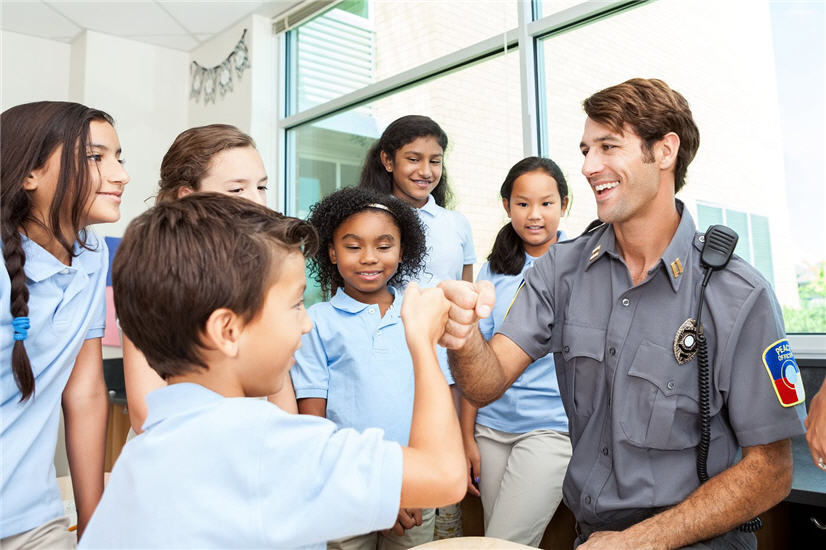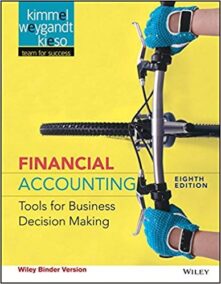Every child who walks into a classroom deserves to feel safe. Safety is not a privilege—it is a fundamental right. Yet, for too many students, the school environment has become a source of fear rather than learning and growth. From bullying and discrimination to physical violence and inadequate infrastructure, unsafe schools compromise not only education but also the mental, emotional, and physical well-being of students. Ensuring that schools are safe is one of the most important responsibilities society holds, as it directly impacts the next generation’s ability to learn, dream, and succeed.
Education thrives on stability and trust. When students feel secure, they can focus on learning, forming friendships, and developing the critical thinking skills necessary to navigate the world. But when fear replaces trust, learning becomes
impossible. A student who worries about being bullied, harassed, or caught in a violent incident cannot fully engage in the classroom. According to educational psychologists, safety—both physical and emotional—is the foundation of Maslow’s hierarchy of needs (source: https://en.wikipedia.org/wiki/Maslow%27s_hierarchy_of_needs). Only when students feel protected can they achieve higher levels of motivation, creativity, and academic success.
Safe schools go beyond locked doors or security cameras. They are places where every student feels seen, respected, and supported. Physical safety measures are essential, but so are emotional safeguards such as anti-bullying programs, mental health resources, and inclusive school cultures that celebrate diversity rather than punish difference.
On August 12, 2025, the Federal Bureau of Investigation (FBI) published a new special report under its Uniform Crime Reporting (UCR) Program, titled “Crime in Schools, 2020-2024” (source: https://www.fbi.gov/news/press-releases/fbi-releases-crime-in-schools-2020-2024-special-report)
This report, accessible through the FBI’s Crime Data Explorer (CDE), aggregates data on criminal incidents that took place at school locations during that five-year interval (source: https://cde.ucr.cjis.gov/LATEST/webapp/#/pages/home).
The stated purpose is to offer a more detailed, location-based picture of crime in school settings, shedding light on victim and offender characteristics, trends over time, weapon usage, crime types, and seasonality.
The hope is that policymakers, school administrators, and law enforcement can use this data to inform prevention strategies and resource allocations.
In total, from 2020 through 2024, participating agencies reported more than one million criminal incidents at school locations, involving approximately 1.5 million victims and 1.2 million known offenders.
Because the data is drawn from law‐enforcement reports submitted via the National Incident-Based Reporting System under UCR, the numbers reflect incidents known to police and reported to the FBI—not necessarily the full universe of school-based crime (source: https://www.congress.gov/crs-product/R46668).
Below, we break down the major findings, discuss strengths and limitations, analyze patterns and implications, and situate the report in the context of school safety debates.
Key Findings of the 2020–2024 Report
- Scope: Magnitude & Distribution
– Over the five years, more than 1 million incidents at school locations were reported.
– These incidents involved roughly 1.5 million victims and 1.2 million known offenders.
– The report does not imply that crime is rising or falling overall—because reporting participation changed over time—but rather presents a descriptive, location-based snapshot.
– Most reported incidents occurred in September.
– The crimes did not necessarily occur during school hours, nor exclusively during the academic term.
- Most Common Types of Crime
– The leading crime categories at school locations were:
– Assaults (personal violence, including use of hands, fists, feet)
– Larceny / theft
– Drug / narcotic offenses
- Weapon Use and Types
– The most frequently reported weapon types were personal weapons (hands, fists, feet).
– Next most common were knife / cutting instruments and handguns.
– The data underscores that many incidents do not involve firearms, but that knives and interpersonal violence remain prominent.
- Temporal and Seasonal Patterns
– September emerges as a peak month for reported incidents.
Federal Bureau of Investigation
– The data does not limit incidents to school hours, so some may be evening, weekend, or off-term events but on school property.
– Because the report is cumulative and descriptive, it does not explicitly present year-by-year upward or downward trends in each crime type, partly due to changes in reporting coverage over time.
- Victim and Offender Characteristics
– The report is intended to show distributions by age, sex, race, and other demographics of victims and offenders.
– Given the nature of school populations, one would expect many victims and offenders to be minors (students) or school staff, though some incidents may involve non-students (visitors, intruders).
Strengths and Limitations of the Report
Strengths:
– Location specificity. The report isolates crime on school property, offering a clearer lens than general crime statistics that may blur school vs. non-school locales.
– Incident-level data via NIBRS. Using the National Incident-Based Reporting System allows for richer, granular data (e.g. multiple offenses per incident, offender/victim attributes, weapons) compared to older summary UCR reporting.
– Broad data coverage. More than one million incidents over five years provide a substantive dataset for analysis.
– Policy relevance. The report is explicitly framed to assist school officials, policymakers, and law enforcement in trend identification and strategic planning.
Limitations and Caveats:
– Incomplete reporting / coverage bias. Participation by law enforcement agencies in NIBRS is voluntary, and coverage has expanded over time. Thus, some of the increase in reported incidents may reflect increased agency participation rather than rising crime (source: https://www.safewise.com/news/fbi-report-crime-in-school/).
– Underreporting. Many crimes (especially harassment, sexual assaults, bullying) may never be reported to police; the dataset captures only incidents known to law enforcement.
– Non-temporal alignment. Because reporting coverage changes, making year-to-year trend comparisons is fraught; the report does not necessarily present reliable trend trajectories in each category.
– Lack of contextual variables. The basic press summary does not provide granular context (school size, security measures, neighborhood factors) that mediate crime risk.
– Ambiguity of time and term. Some incidents on “school property” may occur outside of instructional hours or during summer breaks, complicating analysis focused on during-class risks.
– Missing data / gaps. Even within the participating jurisdictions, there may be gaps or inconsistencies in how agencies classify and record incidents.
Schools in National Crime Trends
While the “Crime in Schools” report is specific, it is helpful to situate it within U.S. crime trends in general. In 2024, the FBI’s national crime data showed:
– Violent crime declined 4.5% compared to 2023.
– Murder and non-negligent manslaughter dropped nearly 15%.
– Property crime also fell overall.
This broader decline suggests that school crimes may similarly be influenced by broader crime control dynamics (community policing, social policy, economic factors).
Because of changing reporting coverage, it is premature to conclude definitively whether crime in schools is increasing or decreasing overall. Many increases in raw counts may simply reflect more agencies reporting rather than more crime events. The FBI’s own framing emphasizes descriptive, not trend, usage.
Analysts must use normalized rates (per student population or per reporting agency) and control for reporting changes to infer trends.
Crimes like bullying, sexual harassment, threats, or minor assaults may not be reported to law enforcement. Thus, the FBI’s data likely undercounts many incidents, especially those handled internally within schools.
Without demographic breakdowns in the summary, one cannot assess whether some student populations experience disproportionately higher risks or differential reporting. There is concern that policing in schools may disproportionately impact marginalized communities, leading to “school-to-prison pipeline” dynamics. Future data releases should foreground disaggregated analysis.
Even with good data, many schools, particularly in low-resource areas, may lack capacity to act (e.g. hire security, implement evidence-based programs). Data must be paired with funds and technical assistance.
Looking Forward: What to Watch and Further Questions
– Trend stabilization. As more agencies consistently report via NIBRS in coming years, more valid longitudinal analyses will be possible.
– Normalized metrics. Analysts should publish incident rates per 1,000 students or per school to facilitate comparisons across states, school sizes, and regions.
– School climate and survey alignment. Pairing crime data with school climate surveys, fear perception, and disciplinary records could reveal gaps between reported crime and student/staff experience.
– Impact evaluations. Rigorous studies (e.g., difference-in-differences, randomized trials) should assess if specific interventions (restorative justice, metal detectors, increased supervision) reduce school crime.
– Equity and subgroup analysis. Future releases should disaggregate victims and offenders by age, gender, race/ethnicity, disability status, to allow equity-focused policy.
– Timeliness improvements. Shortening lag between data collection and public release (e.g., monthly updates) will make the statistics more actionable.
– Broader location analyses. Extending “crime on school property” to include surroundings (school zone vicinity) can capture spillover effects.
– International comparisons. Benchmarking U.S. school–based crime incidence against other countries may help contextualize magnitude and prevention models.
Conclusion: Safety as a Moral Imperative
The FBI’s “Crime in Schools, 2020–2024” special report marks a significant step forward in transparency about criminal activity on school property. With over one million recorded incidents involving 1.5 million victims, the data underscores the scale of the challenge facing educational institutions. While assaults dominate, theft, drug offenses, and weapon incidents remain persistent threats. The prominence of personal and knife-based weapon use suggests the need to broaden focus beyond firearms.
Yet the report is not without limitations: variable reporting participation, underreporting, and methodological challenges caution against simplistic trend interpretations. To make the data truly impactful, stakeholders must couple it with normalized metrics, disaggregated analysis, proactive prevention strategies, and adequate resourcing.
As the dataset matures and reporting stabilizes, future iterations hold the promise of revealing more reliable longitudinal trends, enabling smarter policy and safer learning environments. For now, the 2020–2024 report provides a foundational baseline for understanding crime in U.S. schools and anchoring evidence-based discussions about school safety.
Too often, discussions about school safety arise only after tragedy strikes. The focus then turns to reactive measures—metal detectors, armed guards, or emergency drills. While these steps may be necessary, they address the symptoms rather than the root causes of unsafe environments.
Prevention must become the priority. This means investing in education systems that prioritize emotional intelligence, teach conflict resolution, and nurture compassion. It also means addressing social inequalities that make some schools less safe than others. Every child, regardless of zip code, race, or economic status, deserves to attend a school that safeguards their potential.
At its core, the argument that students deserve safe schools (source: https://learningpolicyinstitute.org/product/safe-schools-thriving-students-report) is not just a policy demand—it is a moral imperative. Children spend much of their formative years in educational settings, and those environments shape their sense of self, their relationships, and their view of society. When schools fail to protect students, we fail an entire generation.
Creating safe schools requires collective effort: teachers who care, administrators who listen, policymakers who act, parents who engage, and students who stand up for one another. Safety is not achieved through fear or control, but through compassion, understanding, and community.
Every student, no matter where they live or what challenges they face, deserves to walk through their school doors with confidence and peace of mind. Because when students are safe, they are free—to learn, to grow, and to imagine a better future for us all.
Megan Wilson is a teacher, life strategist, successful entrepreneur, inspirational keynote speaker and founder of https://EbookACE.com. Megan champions a radical rethink of our school systems; she calls on educators to teach both intuition and logic to cultivate creativity and create bold thinkers.










